Reviews
Zum Vergleich / By Comparison
Harun Farocki
Austria/Germany, 2009
Credits
Review by Leo Goldsmith
Posted on 05 September 2014
Source Harun Farocki Filmproduktion/Navigator Film screener
External links
Harun Farocki Filmproduktion’s website
Views from the Avant-Garde main page
Categories The 47th New York Film Festival
Screening as part of the New York Film Festival’s annual avant-garde sidebar, curated by Mark McElhatten and Gavin Smith, Harun Farocki’s In Comparison is a 60-minute experimental ethnography of brickmaking (and sometimes -laying). Filmed in a variety of locations in India, Germany, Burkina Faso, France, Austria, and Switzerland, the film extends the German-Czech filmmaker’s interest in theories of design, engineering, and technology and their impact on how societies function.
One of Farocki’s principal preoccupations is machinery, and here this theme manifests itself in a comparison between actual modern machinery - the tools of industrial capitalist production - and a metaphorical social machinery, which applies human energy and a sense of collectivity. In 2007, I wrote about the filmmaker’s large exhibition at Oslo’s Museet for samtidkunst, which featured classic works (like his Eye / Machine triptych) alongside his installation on the 2006 World Cup Final, Deep Play. Part of In Comparison screened there as a work-in-progress, featuring footage from only one or two of the locations here. (I specifically remember the makeshift, but effective, process of hand-framing each brick in the Burkina Faso sequence.) In its complete form, it strikes me as much fuller than it did at the time, ranging more widely in geography and culture, with a far more complex integration of simple visual documentation and pedagogical diagrammatic animation. In its exploration of variety of means of construction, the film doesn’t simply set up a binary opposition between tradition and technology, east and west, the First and Third Worlds, but rather explores the various gradations between these polarities.
Each sequence of images from each of the locales is accompanied by intertitles, ranging from simple computer graphics of a brick or sequence of bricks to more complex diagrams to combinations of text and icon. These intertitles are used sparingly but pointedly, often conveying a minimum of information in almost telegraphic prose: “Production plant from 1930—same routine as then.” As the film progresses, these text/image interjections become more complex, as the means by which bricks are fashioned, fired, and put into place become more intricate. These more involved processes are often high-tech - one factory in Switzerland features a robot translating an image into a massive brick-mural (“one brick equals one pixel”) - while others retain strong connections to older artisanal models.
The construction of a children’s home in India involves the integration of new architectural ideas and designs with traditional brickmaking practices. Farocki even gives us, in his most editorial intertitle, an example of a “socially minded idea,” whereby a brick building is fired using an internal baking process in order to set it, and that process in turn provides heat to bake other bricks, which are then sold in order to finance the building’s construction. Farocki’s highlighting of the circularity and efficiency of this particular model calls attention to - again, by comparison - the many variations in the other models he observes: the construction of a clinic in Burkina Faso by the men, women, and children of an entire community, complete with singing and bricks cast and baked in the sun right on the construction site; the precision-obsessed construction materials in an Austrian factory, in all of its austere industrial complexity, where materials are fashioned and tested to conform to minute specifications.
In some ways In Comparison recalls the 2005 video Squiggle by young German-born, Toronto-based filmmaker Oliver Husain. His film concerns the collective construction of a film set using a now-rare tradition bricklaying practice, followed by a version of a Bollywood musical performed on this set. Husain’s is more fanciful than Farocki’s more discursive, detail-oriented study, of course, but both posit the processes of construction and filmmaking as crafts that require specific, local, artisanal skills and collective implementation: any film, as any building, betrays specific details about the culture, economics, and purposes from which it originated. The form which Farocki gives to his film of these varying construction models - contrasting text, image, and icon through montage and the technologies of cinema - suggests that there is a comparison being made here not only between the varying forms of brickmaking but also between these practices and the process of making a film. It is a limited analogy, of course, but film is nonetheless an industrial as well as an artisanal practice, with all of the same variance in economics, class, ethnicity, and social function.
More The 47th New York Film Festival
-

Sweetgrass
2009 -
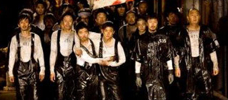
Kanikosen
2009 -

Police, Adjective
2009 -
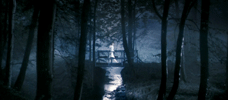
Antichrist
2009 -
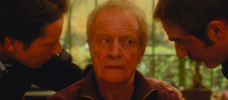
Wild Grass
2009 -
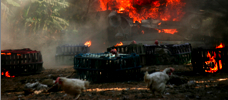
Lebanon
2009 -
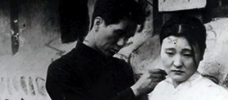
Crossroads of Youth
1934 -
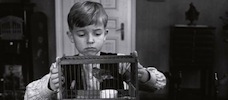
The White Ribbon
2009 -

Mother
2009 -
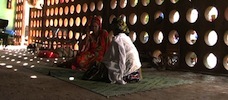
Min Ye
2009 -
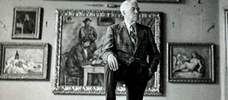
The Art of the Steal
2009 -
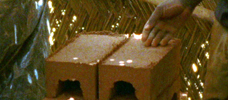
In Comparison
2009
We don’t do comments anymore, but you may contact us here or find us on Twitter or Facebook.



